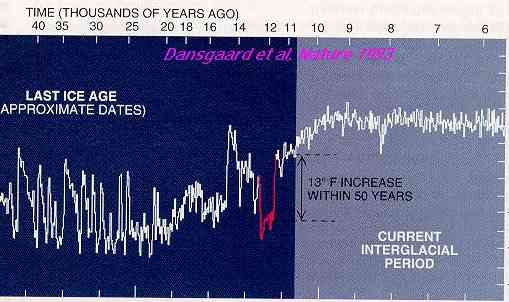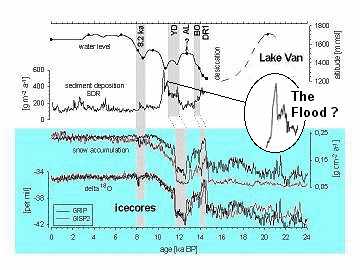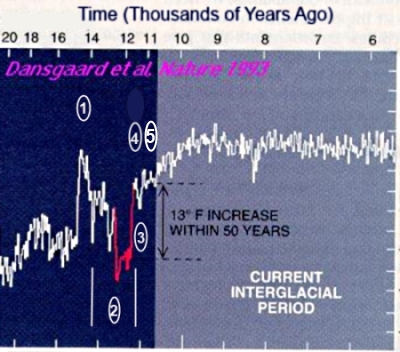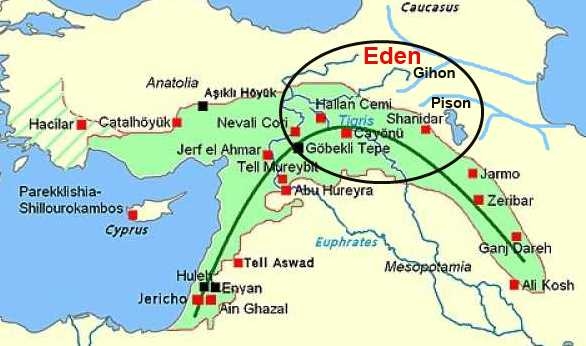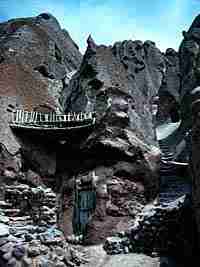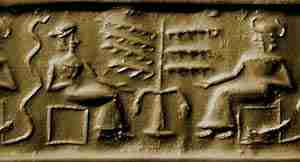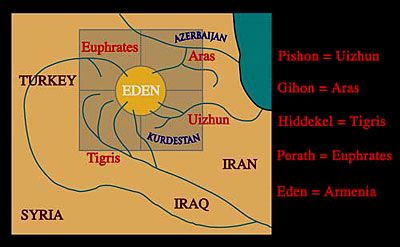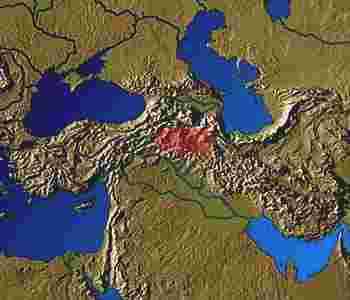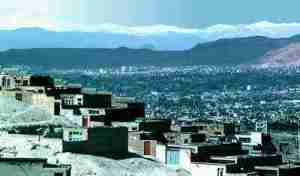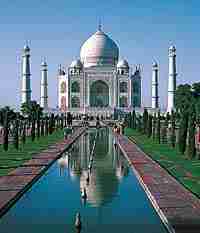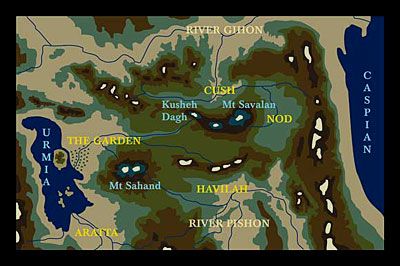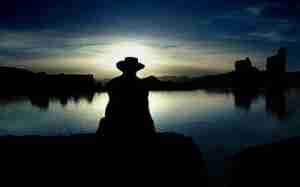BIBLICAL RESEARCH |
The Evidences for a Recent Dating for Adam,
about 14,000 to 15,000 years Before Present
A recent genetic study of human genes related to the brain concluded that possibly
there appeared a "microcephalin variant (that)
could have arisen anywhere from 14,000 to 60,000 years ago" and an "ASPM variant
ranged from 500 to 14,000 years"
ago and "roughly correlating with the development of written language,
spread of agriculture and development of cities" (see more)
Now if one assumes that the "microcephalin variant
could have arisen anywhere from 14,000 to 60,000 years ago", possibly
could correspond to the "Big Bang" or "Fortuitous Mutation" that Richard G. Klein
refers to in his book "The Dawn of Human Culture" and says occurred about 50,000
years ago. Then, what about the "ASPM variant ranged from 500 to 14,000 years"
ago and "roughly correlating with the development of written language,
spread of agriculture and development of cities" as proposed.
The Bible repeatedly says that Adam and his immediate offspring were
farmers Genesis 2:15 And the Lord God took the man, and put him into the garden of
Eden to dress it and too keep it."
Genesis 3:23 Therefore the Lord God sent him forth from the garden of Eden to
till the ground from whence he was taken."
Genesis 4:2 And Abel was a keeper of sheep, but Cain was a tiller of the ground." Here is a review of some of the findings by archaeologists concerning farming:
"The great majority of the cultivated plants of the world trace their origin
to Asia. Out of 640 important cultivated plants, about 500 originated in
Southern Asia. In Asia alone we have established five of the principle regions
of cultivated plants.... The fifth region of origin in Asia is the
Southwestern Asiatic centre and includes Asia Minor, Trans-Caucasia, Iran and
Western Turkmenistan. This region is remarkable, first of all, for its
richness in numbers of species of wheat resistant to different
diseases...There is no doubt that Armenia is the chief home of cultivated
wheat. Asia Minor and Trans-Caucasia gave origin to rye which is represented
here by a great number of varieties and species.... Our studies show definitely that Asia is not only the home of the majority
of modern cultivated plants, but also of our chief domesticated animals such
as the cow, the yak, the buffalo, sheep, goat, horse, and pig...The
chief home of the cow and other cattle, the Oriental type of horse, the goat
and the sheep is specifically Iran.... As the result of a brilliant work of Dr. Sinskaya, the discovery was
recently made that the home of alfalfa, the world's most important forage
crop, is located in Trans-Caucasia and Iran.... From all these definitely established facts the importance of Asia as the
primary home of the greatest majority of cultivated plants and domesticated
animals is quite clear." More recent studies conducted by Melinda A Zeder and Brian Hesse (Science
287 (2000) 2254-57) place the initial domestication of goats to the Zargos
Mountains at about 10,000 years ago. In more recent studies they have adjusted
the dates slightly and now place domestication of sheep and goats at 11,000 years ago,
pigs at 10,500, and cattle at 10,000. "The earlier dates mean that animals were
domesticated at much the same time as crop plants, and bear on the issue of how
this ensemble of new agricultural species the farming package known as the
Neolithic revolution spread from the Near East to Europe."
And Manfred Heun's (Science 278 (1997) 1312-14)
studies indicate that large scale wheat cultivation began from 8,000 to 9,000 years
ago near the Karacadag Mountains. Both areas are very near where the Tigris and
Euphrates Rivers come close together.
"The cradle of agriculture generally has been placed in the Jordan Valley of the
southern Levant (today's Israel and Jordan). But work by Simcha Lev-Yadun of
Israel's Agricultural Research Organization and colleagues suggest the first
farms may have been farther north, between the Tigris and Euphrates rivers in
what is today northeastern Turkey and northern Syria.
Wild progenitors of the main Neolithic founder crops (einkorn wheat, emmer wheat,
barley, lentil, pea, chickpea, bitter vetch, and flax) are found together only
in this small core area of the Fertile Crescent.
Lev-Yadun reports that wild chickpea especially is extremely rare, yet it was a
staple crop of Neolithic life 10,000 years ago. Agriculture, therefore, probably
began in an area where chickpea is native. Archaeological evidence shows that the
earliest known farming settlements of the Fertile Crescent were in this core area.
Also, the limited genetic variability of these crops implies that they were
domesticated only once rather than by several different cultures at roughly
the same time. Evidence of domesticated crops in the core area dates to about
10,000 years ago, while the earliest signs of farming elsewhere are about 9,300
years ago.
Neolithic sites discovered in the core area indicate that a society with plenty
of food thrived there. In sites such as Cayonu, Novali Cori, and Gobekli Tepe,
impressive architecture, images, and artifacts have been found. Settlement sites
are also larger in this area than many others of the same time in other parts
of the Fertile Crescent. ..." (From "The Cradle of Agriculture? New Evidence
Moves the World's First Farmers into Turkey" by Reagan Duplisea,
http://www.discoveringarchaeology.com/ articles/ 060100-turkeyfarm.shtml)
"It is known that agriculture spread from the Middle East to Europe during the
Neolithic period about 12,000 years ago, but for many years archeologists have
debated how this occurred. Was it due to the movement of people or to the movement
of ideas? Previous genetic analysis of people living today suggests a
migration - that the people moved - but critics have questioned this view.
The latest study reinforces evidence of a migration in which people brought
their ideas and lifestyle with them."(from http://www.sciencedaily.com/releases /2002/09/ 020911072622.htm)
Genesis 11:2 And it came to pass,
as they journeyed from the east,
that they found a plain in the land of Shinar, and they dwelt there.
Genesis 11:9... "the name of it called Babel; because the Lord did there
confound the language of all the earth;
and from thence did the Lord scatter them abroad upon the face of the earth.
"A family tree of Indo-European languages suggests they began to spread and split about 9,000 years ago. The finding hints that farmers in what is now Turkey drove the language boom - and not later Siberian horsemen, as some linguists reckon. ... Around this time, farming techniques began to spread out of Anatolia - now Turkey - across Europe and Asia, archaeological evidence shows." (From "Language tree rooted in Turkey" by John Whitfield, http://www.nature.com/ nsu/nsu_pf/ 031124/ 031124-6.html) (see more)
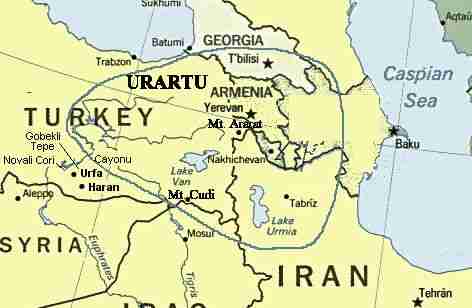
Are there any other evidences ?
Genesis 5:29 And he called his name Noah, saying,
This same shall comfort us concerning our work and toil of our hands,
because of the ground which the Lord hath cursed.
Genesis 8:21 ... I will not again curse the ground any more for man's sake: ...
... neither will I again smite any more every thing living, ...
This same shall comfort us concerning our work and toil of our hands,
because of the ground which the Lord hath cursed.
Genesis 8:21 ... I will not again curse the ground any more for man's sake: ...
... neither will I again smite any more every thing living, ...
Looking at the Greenland ice core data and Lake Van varve data as follows.

